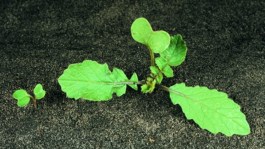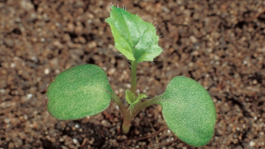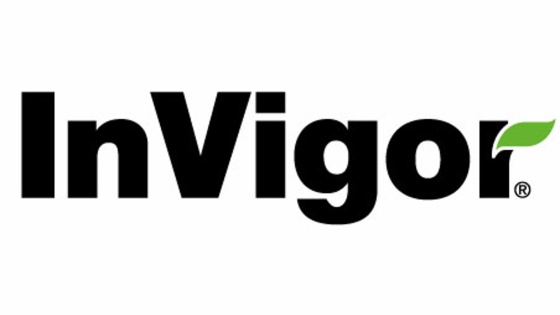"Clearfield® has transformed the way we grow OSR, the performance is phenomenal."
Clearfield®
The Clearfield system is well known for delivering problem weed control including the difficult brassica weeds.
Growers also value Clearfield® for the control of volunteers, helping with achieving an optimum plant canopy, which is essential for maximising yields. In addition, with volunteers now identified as a major contributor to the erucic acid problem, their control means a purer oil sample at harvest, especially where high erucic acid rape (HEAR) or industrial rape on set-aside has been grown in the past.
The only complete OSR system. Using Clearfield® and Cleravo® together gives you:
Reduced risk
Clearfield® varieties have great autumn vigour and give you the opportunity to control the widest range of weeds with Cleravo®.
Flexible timing
Cleravo® can be applied at any time from expanded cotyledon up to eight true leaves of the crop, giving you greater flexibility at a busy time of year.
Comprehensive weed control
Cleravo® offers the most broad spectrum weed control on the market, including problem brassica weeds which can negatively impact yield.

Robin Aird - Farm Manager
Charlton Park Estate, Wiltshire
The most flexible and broad-spectrum weed control system for oilseed rape
The post-emergence, contact and residual activity of Cleranda® and Cleravo® provide the widest available control of any available herbicide in oilseed rape.
Volunteer oilseed rape
_560x315.jpg?1679057834526)
Control of volunteers helps achieve an optimum plant canopy, which is essential for maximising yields.
With volunteers now identified as a major contributor to the erucic acid problem, their control means a purer oil sample at harvest, especially where high erucic acid rape (HEAR) or industrial rape on set-aside has been grown in the past.
It is important to manage volunteer OSR in the rotation. In cereal crops, volunteers can be controlled relatively effectively. However. the only way to control oilseed rape volunteers and many erucic acid producing weeds within the OSR crop is using the Clearfield® system.
Work carried out in 2018 by NIABTAG, funded by AHDB, has confirmed that volunteer oilseed rape, with high or elevated erucic acid levels, has been responsible for the high levels of erucic acid found in harvested samples (AHDB Project report No. 602).
The report concluded that over time, and because of the genetically dominant nature of the high erucic trait, the problem has been amplified and moved around the farm through the practice of farm saving conventional seed.
Weeds high in erucic acid
With weed and volunteer control identified as a key control point, Clearfield® is a unique tool to reduce the potential contamination arising from high populations of brassica weeds such as charlock, runch and hedge mustard, as well as volunteer oilseed rape.
Avoidance of volunteers by good husbandry and sowing certified seed that has been tested and confirmed to be <0.1% erucic acid can help to solve the problem but where erucic acid contamination arising from volunteers is a concern, or unknown, the Clearfield® system is a useful tool to eradicate the problem.
One single fully high erucic acid volunteer seed, at 50% erucic acid, in a sown population of 50 plants, has the potential to raise the erucic acid level in the harvested sample by 1%.
It is difficult to identify volunteers by eye but around flowering-time, they can be easier to spot, as they may have different plant types, heights or flowering dates.
| Clearfield removes potential sources | Erucic acid % |
|---|---|
| High Erucic Acid (HEAR) volunteer oilseed rape | 57.1 |
| Charlock (Sinapis arvensis) | 31.7 |
| Runch/Wild radish (Raphanus raphanistrum) | 26.7 |
| Hedge mustard (Sisymbrium officinale) | 20.9 |
Impact of Clearfield® production system on the quality of winter oilseed rape oil, Leaper D, J and Melloul, S 2010.
Wide range of market-leading hybrids
As grower confidence in the Clearfield® system has grown, so has the range of hybrids to choose from. There are 7 Clearfield® hybrids available for autumn 2023, with a range of growth habits, agronomic performance and yield potential.
Clearfield® hybrids are denoted by the CL suffix after the variety name. Further information on individual hybrids is available from the breeders.
| Variety | Recommended List 2023 | Breeder |
| InV1266 CL | BASF | |
| PT 279 CL | W/E Sp | Corteva |
| PX125 CL | Corteva | |
| DK Imprint CL | Y | Dekalb |
| Matrix CL | UK Sp | DSV |
| Beatrix CL | N Sp | DSV |
| LG Constructor CL | UK Sp | Limagrain |






